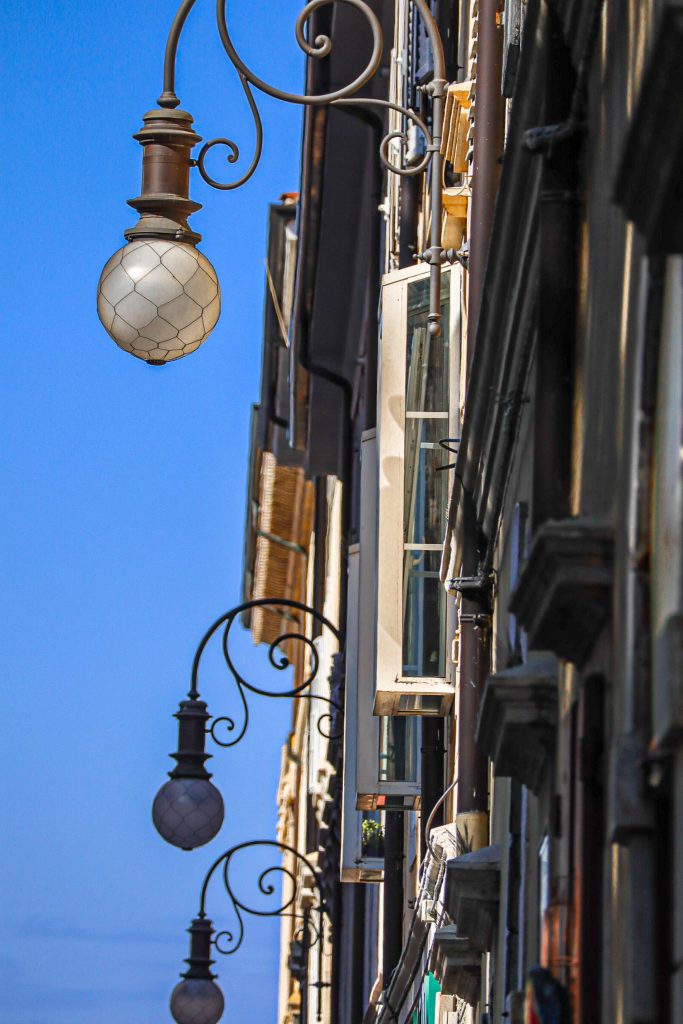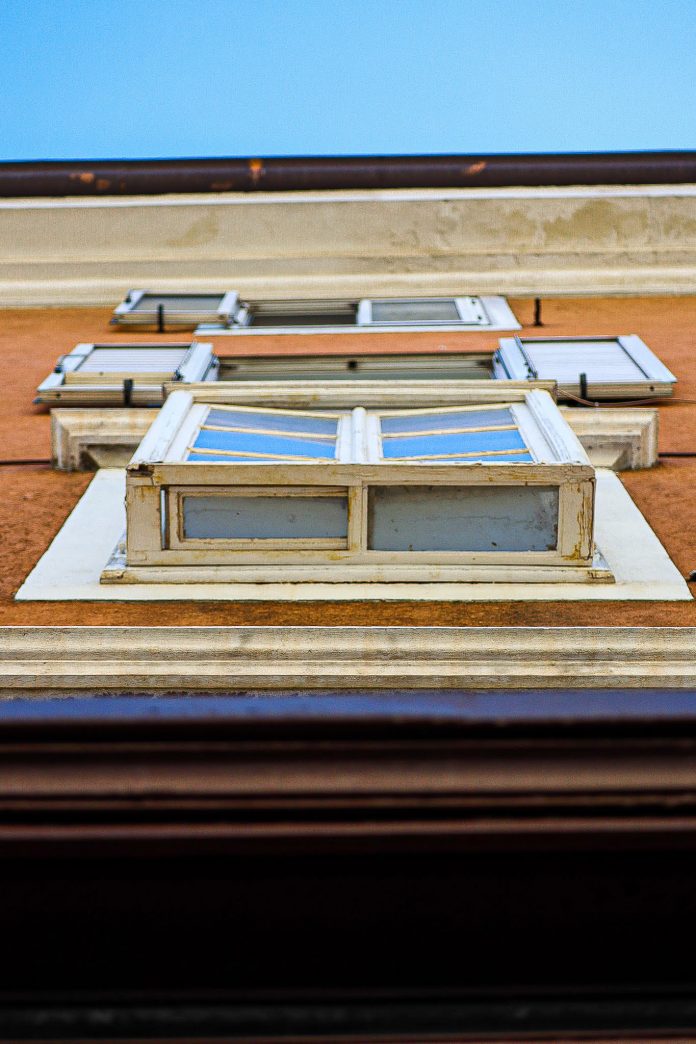By Ashley Caneva
As you may know from the chronicles of my husband’s pedestrian adventures in and around Trieste, my first several months as an official Triestina (on paper, anyway) were marked by many, many medical appointments and chemotherapy infusions.
The silver lining to my treatments coinciding with the height of the Covid-19 lockdown was having a perfectly legal and necessary reason to leave the apartment, get a little sun, and experience a small piece of Trieste on the walk to Ospedale Maggiore.

The city was eerily quiet and empty. While I missed the gentle bustle, it was the perfect environment to observe the striking architecture and let my imagination run wild with visions of the productions that took place in the Roman theater or the Austro-Hungarian top hat donning dandies that would have trod the same paths I walked in my trusty neon pink sneakers.

When you have the city to yourself, you notice things you could have otherwise missed – be it a historical marker you’ve never spotted, or a nonna quietly surveilling the street from her window.
Architectural details are always something that stand out to me, and on my regular trips to and from the hospital I spotted something really interesting that I have never seen before. In various parts of Trieste, there are peculiar windows protruding from building facades like large medicine cabinets.
I began to wonder what the unique design could be for. Perhaps a small greenhouse for an indoor herb garden when there was no outdoor space? Or a means to look out the window and down the street with Austrian updos unscathed by the bora winds?

I would simply refer to them as “box windows,” but after a bit of research I discovered they are referred to in Triestino as sburti or jazere. The latter may be in reference to the “jazere” wells that were used in the Karst for ice production in the 1700s, or the domestic “jazera” (insulated cabinets) that ice was kept in.
Research revealed that these overhanging windows were often used in cooler months to preserve perishables like butter, meat, and cheese by families who may not have been able to afford to bring ice into their homes. This, it seems, is why you typically won’t find them on the grand palazzi in Trieste – a shame for the upper class Triestini of the time as they really are excellent for a bora-free peek outside.

Unfortunately, there are very few “jazere” left in the city as they are not very energy efficient. So the next time you stroll through the city, look upward and see if you can spot one of these unique relics of Trieste’s dairy-preserving, Austro-Hungarian past. And maybe remember to pick up that butter you needed to purchase while you’re out.






























I can not wait to visit Trieste! I love this article and its framework. The author took a bleak daily commute and found beauty and history instead. Beautifully written.
Some time ago I read a comment of a traveller coming through the city around the year 1820. He wrote that Trieste has many beauties and a specific atmosphere which he liked very much. One of the things that fascinated him, was that the Triestini after sunset put candles in their protruding double windows, so it was a joy to take promenades at night and that into the small hours it was very safe to be out and about. Now i tried to find where I read this, but I couldn’t. As soon as I do, I will post again and tell you. And, wouldn’t it be a great thing to restart these candle light evenings (vigili del fuoco permitting 😉 ) for special moments like S. Giusto ?